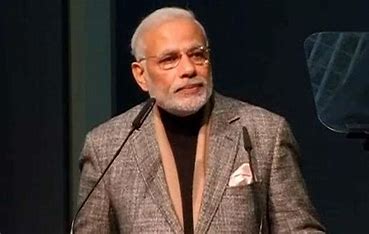
Prime Minister Narendra Modi will arrive in Gujarat on Wednesday for a one-day aerial inspection as the state is devastated by Cyclone Tauktae. He will monitor the post-cyclone situation. He will reach Bhavnagar from Delhi at 11.30 am on Wednesday. After reaching here, he will conduct aerial inspections of cyclone affected areas of Bhavnagar, Amreli and Gir Somnath. He will then also conduct an aerial inspection of the Union Territory of Diu. He will later hold a meeting with officials.
After conducting an aerial inspection, PM Modi will arrive in Ahmedabad and assess the situation with Chief Minister Vijay Rupani as well as a review meeting with senior secretaries of the state.
The Prime Minister had a telephone conversation with CM Rupani on the preparations being made by the government to deal with the cyclone. He also spoke about help from the central government to deal with the storm.
Rupani informed that at least 13 people died due to accidents under the impact of the cyclone. Power supply has been disrupted in 5,951 villages in the state. As many as 69,429 power poles in the state have been damaged due to the cyclone, while 674 roads in Gujarat were temporarily closed due to falling trees.
Many places have been devastated after the devastating Cyclone Tauktae hit the coast of Saurashtra. From Saurashtra to many districts of South Gujarat, 5 inches of rain has fallen in 8 hours. Roads have also been blocked due to heavy winds. Rainfall has been recorded in Bhavnagar, Valsad, Surat, Amreli, Bharuch, Anand, Ahmedabad and other districts in the state.
According to the State Emergency Operations Center, Gandhinagar, 176 talukas in 23 districts of the state received heavy to moderate rains from 6 am to 2 pm today. The rainfall was 5 inches in Bhavnagar taluka, 4.8 inches in Umargam, 4.5 inches in Olpad, 4 inches in Rajula, 3.7 inches in Botad and Surat city. Ahmedabad received 3 inches, with the central area of the city receiving the most rainfall; Sinhor 3.6 inches, Hansot, Palitana, Pardi and Vallabhipur 2.9 inches, Umrala 2.7 inches and Vapi 2.5 inches.
According to the Ahmedabad Collector, the wind could blow at a speed of 60 kmph. By 6 pm, more than 250 trees had fallen and more than 50 places had been flooded. Rains in many parts of the city led to flooding of sewers. Car and rickshaw drivers narrowly escaped a hoarding collapse near Parimal Garden in Paldi. Uprooted trees and hoardings have been reported in Ahmedabad.
Cyclone Tauktae entered Gujarat from Una last night and has now entered Rajasthan via North Gujarat. However, now its intensity is much less than before. The National Disaster Response Force (NDRF) Director General S.N. Pradhan on Tuesday said that the “worst is over” and Cyclone Tauktae will “become a depression” by Tuesday evening. Pradhan said, “The cyclone has weakened into a cyclonic storm level and probably in another couple of hours it will become a cyclonic system which is a much lower category. By the time it reaches Gujarat coast in the late evening, it would have become a depression…The worst is over.”
“Another good news is that the state emergency operation centre (SEOC) of Gujarat has informed us and confirmed that there have been no deaths at all,” he further said, adding that there is considerable damage to property and infrastructure.
“Initially there were reports in the morning of hundreds of villages losing electricity, but within an hour the electricity has been restored. These are good signs of the disaster response capabilities of India and the states. It will take some more time to complete the restoration,” Pradhan said. “It was very important to clear the roads and vital arteries of communication during these troubled times of Covid-19. We have sent troops and personnel who have been vaccinated with both doses,” he further said, adding that they were equipped with special suits and accompanied by paramedics, doctors and attendants while sharing his hope that the forces will come out unscathed by the pandemic.
In a tweet the meteorological department said, “The cyclone continues to show weakening trend. Eye is disorganising, wall cloud is weakening.”
WITH AGENCY INPUTS















